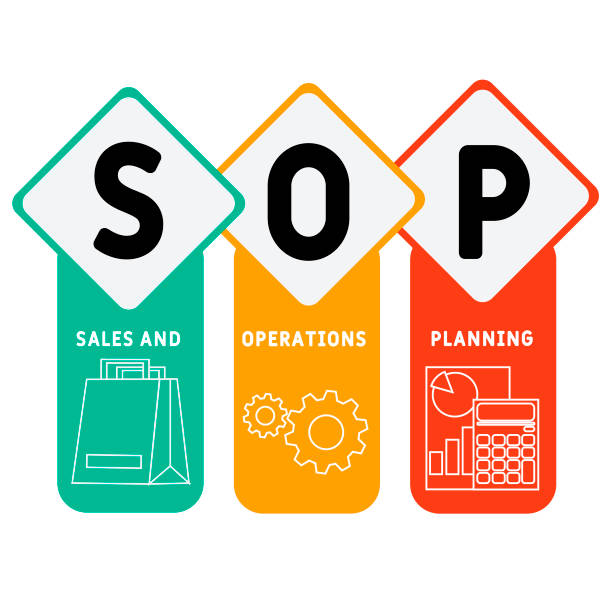
SOP development process
In any organization, the consistent and accurate execution of tasks is essential to maintaining quality, safety, and efficiency. Standard Operating Procedures (SOPs) serve as the backbone of this consistency by documenting the exact steps employees need to follow. However, having well-written SOPs is only part of the equation; equally important is ensuring that employees fully understand and can effectively implement these procedures. This is where effective SOP training strategies come into play.
The goal of SOP training is not just to inform employees about the procedures but to ensure knowledge transfer that leads to reliable performance and compliance. This article explores various strategies for SOP training and emphasizes the critical role of the SOP development process in laying the foundation for successful knowledge transfer.
Understanding the Importance of the SOP Development Process
Before diving into training strategies, it’s crucial to acknowledge the impact of the SOP development process on training outcomes. A clear, concise, and user-friendly SOP makes training significantly more effective. Poorly written or overly complex SOPs can confuse trainees, reduce adherence, and increase errors.
An effective SOP development process includes involving key stakeholders such as process experts, trainers, and end-users to ensure the procedures are practical and easy to understand. Visual aids, flowcharts, and step-by-step instructions can enhance clarity. When the SOPs are well-crafted, training becomes more straightforward, and employees are more likely to retain and apply the information.
Key Strategies for Effective SOP Training
- Interactive Training Sessions
Traditional lecture-style training sessions often fall short when it comes to procedure knowledge transfer. Instead, interactive training methods that engage employees actively are far more effective. These sessions might include group discussions, Q&A segments, and hands-on practice.
For example, after explaining a new SOP, trainers can divide employees into small groups to role-play or simulate the procedure. This hands-on approach allows trainees to experience the process firsthand, ask questions in real-time, and internalize the steps.
- Blended Learning Approaches
Blended learning combines online digital media with traditional classroom methods, providing flexibility and multiple touchpoints for learning. In SOP training, this could mean providing employees with access to digital SOP manuals, video tutorials, and e-learning modules alongside in-person sessions.
The advantage of blended learning is that employees can revisit materials at their own pace, reinforcing their understanding. Video demonstrations showing the correct execution of procedures can be particularly helpful, especially for complex or safety-critical tasks.
- Use of Visual Aids and Job Aids
Humans are predominantly visual learners, so incorporating visual aids in SOP training enhances comprehension and retention. Visuals such as diagrams, infographics, flowcharts, and step-by-step photos break down complicated procedures into understandable segments.
Job aids—quick reference guides or checklists—can be distributed during training and kept at the workstations to assist employees during actual task performance. These tools act as reminders and reduce dependence on memory alone, minimizing errors.
- Incorporating Real-Life Scenarios and Case Studies
Presenting trainees with real-life scenarios or case studies related to the SOP helps them understand the practical importance of the procedures and the consequences of non-compliance. It connects theoretical knowledge to everyday work situations, making the training more relatable and meaningful.
For instance, trainers might share stories of incidents or inefficiencies caused by failure to follow the SOP, prompting trainees to appreciate the necessity of strict adherence and motivating them to learn carefully.
- Assessment and Feedback
Assessment is a vital part of the knowledge transfer process. By testing employees’ understanding of SOPs through quizzes, practical demonstrations, or verbal questioning, trainers can identify knowledge gaps early.
Providing timely and constructive feedback helps trainees correct mistakes and reinforces correct behaviors. In some cases, retraining or supplemental coaching may be necessary to ensure full competence.
- Peer Learning and Mentorship
Encouraging peer learning can accelerate the SOP knowledge transfer. Experienced employees or supervisors can act as mentors, guiding less experienced staff through procedures and sharing tips for efficiency and compliance.
Mentorship fosters a culture of continuous learning and accountability, while peer-to-peer interactions often feel less intimidating than formal training sessions, encouraging open dialogue and questions.
- Regular Refresher Training
SOPs may be updated regularly due to changes in technology, regulations, or organizational processes. Therefore, training should not be a one-time event. Regular refresher sessions help employees stay current and reinforce good practices.
Refresher training can be shorter and focused on updates or common errors observed in audits or quality checks. This ongoing education supports sustained compliance and reduces knowledge decay.
Leveraging Technology in SOP Training
Modern technology offers numerous tools to enhance SOP training effectiveness:
- Learning Management Systems (LMS): LMS platforms allow organizations to assign, track, and assess SOP training electronically. They can host interactive modules, quizzes, and certification processes, ensuring all employees complete required training.
- Virtual Reality (VR) and Augmented Reality (AR): These emerging technologies provide immersive training experiences where employees can practice SOPs in simulated environments without risk. VR and AR are particularly beneficial for hazardous or complex procedures.
- Mobile Learning: Providing SOPs and training content accessible via smartphones or tablets enables employees to learn on the job, offering instant access to instructions when needed.
Measuring the Success of SOP Training
To ensure that SOP training achieves its objectives, organizations must measure its effectiveness through various metrics, such as:
- Employee competency evaluations
- Reduction in procedural errors or incidents
- Compliance audit results
- Employee feedback and satisfaction surveys
Continuous improvement based on these metrics helps refine both the SOPs themselves and the training programs.
Conclusion
Effective SOP training is fundamental for transferring procedure knowledge accurately and consistently across an organization. By focusing on interactive, blended learning methods supported by clear and well-designed SOPs through a solid SOP development process, companies can ensure employees are well-prepared to perform their tasks safely and efficiently.
Incorporating visual aids, real-life scenarios, assessments, and ongoing refresher courses further solidifies learning and compliance. Leveraging technology and fostering a culture of mentorship and continuous learning also contribute significantly to the success of SOP training programs.
Ultimately, investing time and resources in comprehensive SOP training strategies pays off by reducing errors, enhancing quality, and improving overall organizational performance.
Reference:
https://blogingers.com/lean-sop-development-eliminating-waste-in-procedural-documentation/







